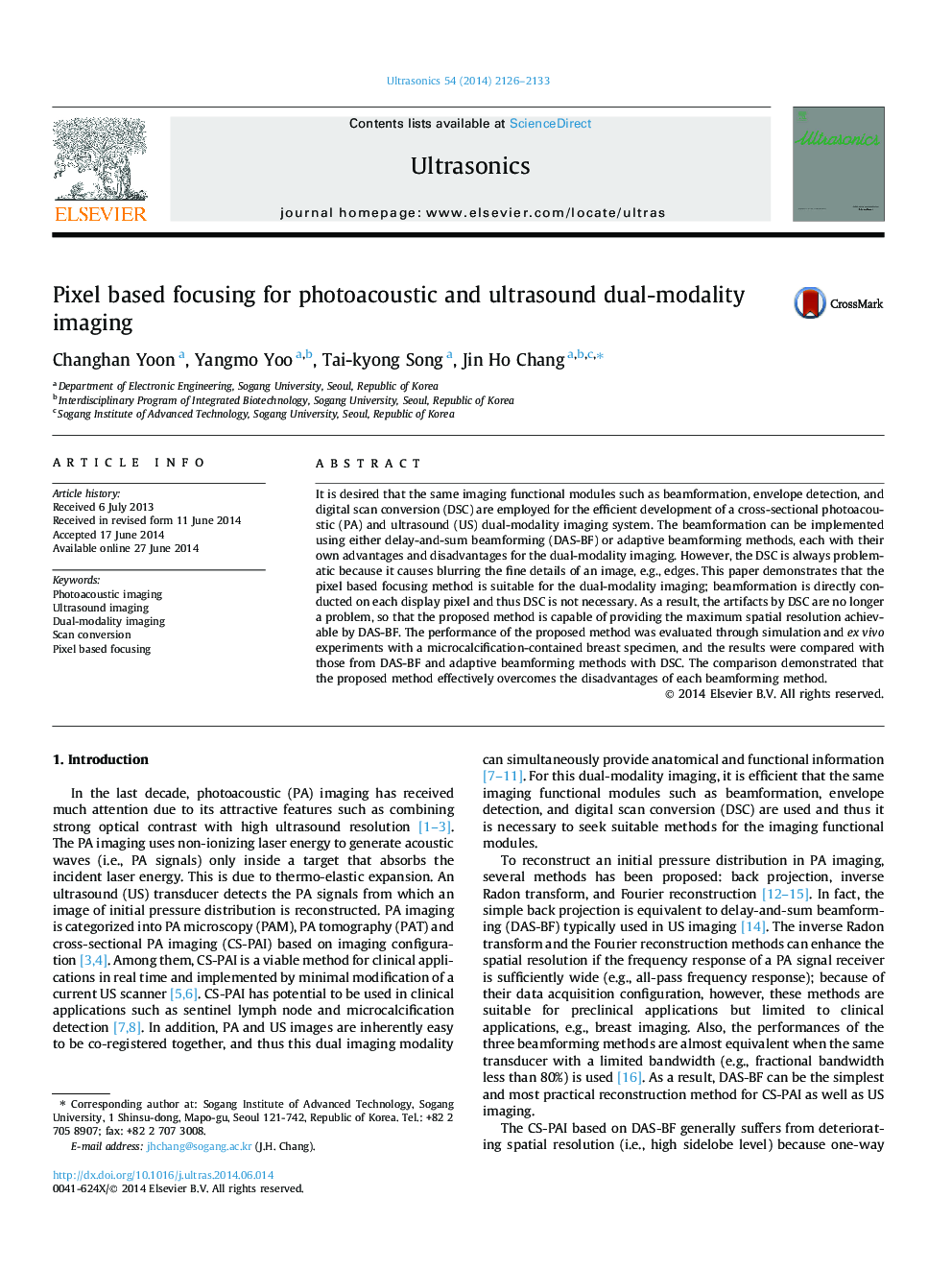| Article ID | Journal | Published Year | Pages | File Type |
|---|---|---|---|---|
| 10690388 | Ultrasonics | 2014 | 8 Pages |
Abstract
It is desired that the same imaging functional modules such as beamformation, envelope detection, and digital scan conversion (DSC) are employed for the efficient development of a cross-sectional photoacoustic (PA) and ultrasound (US) dual-modality imaging system. The beamformation can be implemented using either delay-and-sum beamforming (DAS-BF) or adaptive beamforming methods, each with their own advantages and disadvantages for the dual-modality imaging. However, the DSC is always problematic because it causes blurring the fine details of an image, e.g., edges. This paper demonstrates that the pixel based focusing method is suitable for the dual-modality imaging; beamformation is directly conducted on each display pixel and thus DSC is not necessary. As a result, the artifacts by DSC are no longer a problem, so that the proposed method is capable of providing the maximum spatial resolution achievable by DAS-BF. The performance of the proposed method was evaluated through simulation and ex vivo experiments with a microcalcification-contained breast specimen, and the results were compared with those from DAS-BF and adaptive beamforming methods with DSC. The comparison demonstrated that the proposed method effectively overcomes the disadvantages of each beamforming method.
Related Topics
Physical Sciences and Engineering
Physics and Astronomy
Acoustics and Ultrasonics
Authors
Changhan Yoon, Yangmo Yoo, Tai-kyong Song, Jin Ho Chang,
